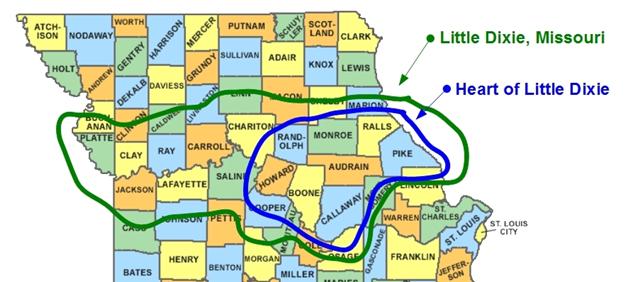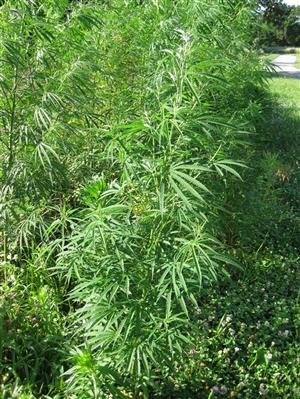Before we jump into 1861, let's spend a few minutes finding out what Missouri was like prior to 1860. Missouri was admitted to the Union on August 10, 1821 directly as a result of the Missouri Compromise of 1820. This maintained a balance in our Federal government, for now there were were 12 free states and 12 slave states.

After Missouri was admitted into the Union in 1821, settlers began flocking to what would become known as Little Dixie, the rich prairie of the Missouri River Valley. If you take Missouri Highway 210 east out of Kansas City, you will find yourself driving through a predominantly agricultural area. This is what the settlers were looking for.
Missouri's “Little Dixie” is a section of the State where the local culture historically paralleled the Upper South. During the Antebellum period, massive waves of migrating Southern farmers and planters flooded the area and transplanted their slave dependent culture and economy. The borders of Little Dixie, for the most part, encompass 17 counties in the rich and fertile timbered river valleys and rolling upper prairies of central Missouri. The region embraces all of the counties along the Missouri River, commencing at present day Kansas City, running east into the central part of the State, and terminating at Callaway County. [3]
What started as subsistence farming began to give way to the cash crops of tobacco, hemp, and, to a lesser extent, cotton.

Hemp became a staple crop for many farmers in Little Dixie during the 1840s. Kentucky was the nation's leading hemp producer. When Kentuckians emigrated to Missouri, they took their hemp culture with them. Hemp culture was based on slavery. [4]
"Without slavery, hemp production would not have been economically viable."
Although tobacco farming demanded less hard work than hemp, it required many hands to plant, cultivate, tend, harvest, and process the crop. [5]
"Without adequate free white workers or labor-saving technology, large-scale tobacco and hemp cultivation would have been impossible without slavery in Little Dixie."
There was another significant group of settlers that emigrated to Missouri. These were the German-Americans and many of them settled in St. Louis. By 1860, St. Louis was a large city boasting more than 190,000 inhabitants. Many of the German-Americans were political refugees that had fled their homeland following the Revolutions of 1848 in the German Confederation. While in Europe, many Germans had challenged the autocratic political structure in place that was ruling the German Confederation. They settled in St. Louis by the tens of thousands. By 1860, more than one third of St. Louis was German-American. Most German-Americans were anti-slavery. [6]